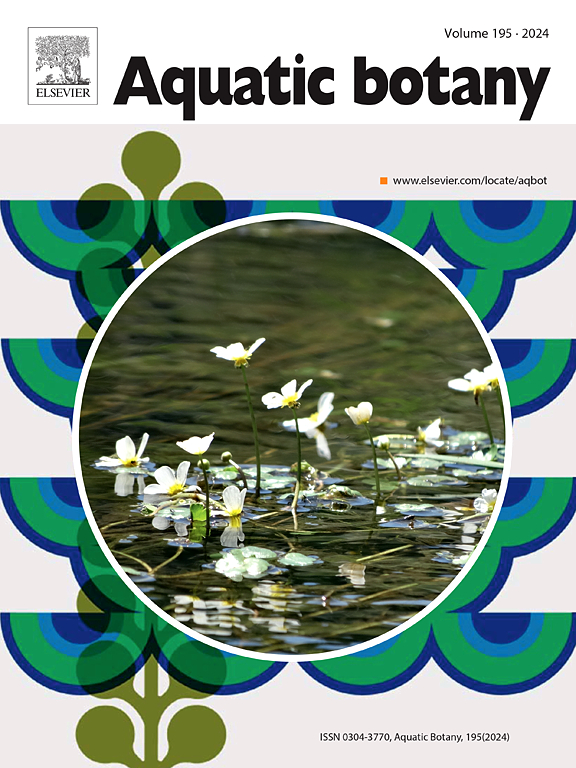No endemic Isoëtes (Isoëtaceae) species in the North Asian Pacific evidenced by genetic and morphological analysis
IF 2.6
4区 生物学
Q2 MARINE & FRESHWATER BIOLOGY
引用次数: 0
Abstract
The genus Isoëtes is a unique group of lycophytes that offers valuable insights into plant evolution. However, taxonomic issues and evolutionary pathways within the genus require further study, particularly in North-East Asia, where only representatives of the I. echinospora complex occur. We studied genetic (nuclear DNA LFY2int and IBR3 regions, transcriptomes) and morphological (size and ornamentation of mega- and microspores, velum coverage) variability of Isoëtes populations, focusing on the Russian Far East. We found no clear genetic and morphological differentiation between European and North Asian populations of diploid I. echinospora s.l. (the latter was referred to as I. asiatica), not supporting treatment of I. asiatica as a separate species. The finding of samples with spiny papillate microspores in some North Asian populations of I. echinospora s.l. (neither differentiated by the other morphological characters, nor genetically) is of particular interest. Genetic analysis of the North Asian Pacific tetraploid I. maritima (initially referred to as I. beringensis) revealed its origin from diploid progenitors close to I. echinospora and North American I. bolanderi or I. howellii, as has been shown earlier for North American populations. This finding supports treatment of the North Asian and North American populations of I. maritima as one species, in line with their morphological similarity.
在北亚太平洋无特有的Isoëtes (Isoëtaceae)种,经遗传和形态分析证实
Isoëtes属是一个独特的石松植物群,为植物进化提供了有价值的见解。然而,属内的分类学问题和进化途径需要进一步研究,特别是在东北亚,那里只有棘孢孢子虫复合体的代表。我们研究了Isoëtes种群的遗传变异(核DNA LFY2int和IBR3区域,转录组)和形态变异(大孢子和小孢子的大小和装饰,绒毛盖度),重点研究了俄罗斯远东地区。我们发现二倍体棘孢螨(i.c echinospora s.l.)的欧洲种群和北亚种群(i.c echinospora s.l.)在遗传和形态上没有明显的差异,不支持将棘孢螨作为一个单独的种来处理。在棘球孢子虫(i.e echinospora s.l.)的一些北亚种群(既不以其他形态特征区分,也不以遗传特征区分)中发现带有带刺乳头状小孢子的样本是特别有趣的。对北亚太平洋四倍体I. maritima(最初称为I. beringensis)的遗传分析表明,它起源于与棘孢I. echinospora和北美I. bolanderi或I. howellii接近的二倍体祖先,正如先前在北美种群中所显示的那样。这一发现支持了北亚和北美海苔属作为一个物种的处理,与它们的形态相似性一致。
本文章由计算机程序翻译,如有差异,请以英文原文为准。
求助全文
约1分钟内获得全文
求助全文
来源期刊

Aquatic Botany
生物-海洋与淡水生物学
CiteScore
3.80
自引率
5.60%
发文量
70
审稿时长
6 months
期刊介绍:
Aquatic Botany offers a platform for papers relevant to a broad international readership on fundamental and applied aspects of marine and freshwater macroscopic plants in a context of ecology or environmental biology. This includes molecular, biochemical and physiological aspects of macroscopic aquatic plants as well as the classification, structure, function, dynamics and ecological interactions in plant-dominated aquatic communities and ecosystems. It is an outlet for papers dealing with research on the consequences of disturbance and stressors (e.g. environmental fluctuations and climate change, pollution, grazing and pathogens), use and management of aquatic plants (plant production and decomposition, commercial harvest, plant control) and the conservation of aquatic plant communities (breeding, transplantation and restoration). Specialized publications on certain rare taxa or papers on aquatic macroscopic plants from under-represented regions in the world can also find their place, subject to editor evaluation. Studies on fungi or microalgae will remain outside the scope of Aquatic Botany.
 求助内容:
求助内容: 应助结果提醒方式:
应助结果提醒方式:


